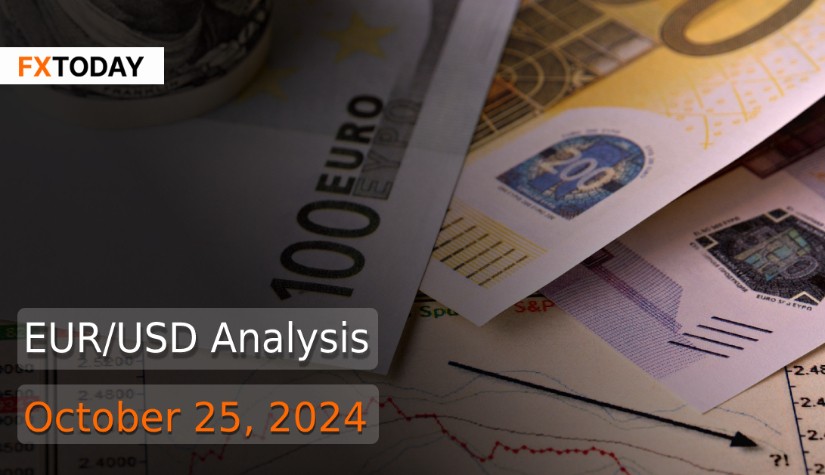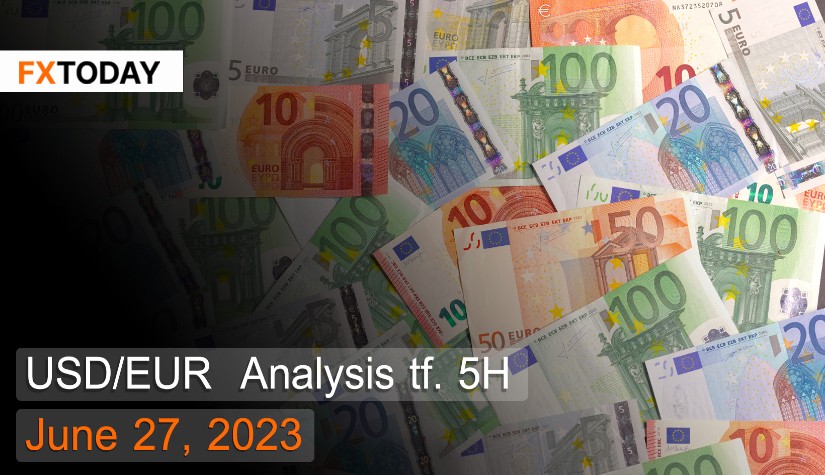US Dollar Strengthens, Euro Faces Prolonged Pressure
On Wednesday, the US dollar strengthened due to robust US economic data, while the euro faced challenges amid a gloomy growth outlook in the Eurozone.
The euro, which holds significant weight in the dollar index, was hampered by unfavorable conditions in the region. Survey data from Tuesday revealed a concerning decline in Eurozone business activity, suggesting the possibility of a recession.
Inflation in the Eurozone remains a concern, as it has decreased for over half of the items in the Harmonized Index of Consumer Prices (HICP) in September. Despite this, it still exceeds the European Central Bank's target, which could complicate matters for both core and headline inflation.
The Eurozone's economic prospects took a hit as the purchasing managers' survey showed a broad-based downturn in business activity, particularly in Germany. This recessionary trend in Europe's largest economy, compounded by falling consumer sentiment and rising food prices, indicated a challenging path to recovery. Additionally, business activity in France continued to shrink, further stressing the Eurozone's economic struggles.
While it's anticipated that the Eurozone will narrowly avoid a recession, the economy is expected to remain stagnant in the current quarter. Eurozone banks are tightening access to credit due to high borrowing costs and a deteriorating economic outlook, which could further dampen economic prospects.
Though employment remains relatively strong, the bank predicts a gradual increase in the jobless rate by year-end. While the rate hikes have likely concluded, policymakers are preparing the public for the likelihood of high for longer interest rates, which may persist well into 2025 to ensure inflationary pressures are fully tamed.
Germany's economic woes were exacerbated by a preliminary survey indicating that the country's business activity contracted for the fourth consecutive month, signaling a full-fledged recession. The Bundesbank's report echoed this sentiment, attributing the downturn to declining industrial production, a shrinking construction sector, and weakening consumption. A renewed contraction would mark four straight quarters of negative or flat growth, making Germany one of the weakest performers in the Eurozone.
The fiscal situation in France remains challenging, and the country is struggling to reduce its budget deficit as planned. Despite reforms in areas like pensions and unemployment, more efforts are needed to meet fiscal targets. The 2024 budget includes measures to reduce debt and achieve significant savings, with a particular focus on ending gas and power price caps.
On the other side, the US dollar gained strength, bolstered by a series of positive economic indicators highlighting the US economy's relative robustness compared to the European Union. US business output improved in October, with the manufacturing sector emerging from a five-month contraction, while services activity showed modest acceleration with signs of easing inflationary pressures.
However, global financial markets have been recently affected by a surge in US bond yields, which pushed the 10-year Treasury yield above 5%, its highest level since July 2007. This surge in yields had previously driven the dollar index to nearly a one-year high. Yet, a subsequent sudden drop in yields demonstrates the sensitivity of financial markets to various external factors. Hence, it is anticipated that this will have an impact on the US dollar, causing continued instability and potential fluctuations within the upward trend in the foreseeable future. Simultaneously, it is projected that the euro may experience ongoing downward pressure for an extended period.
Data for Technical Analysis (5H) CFD EUR/USD
Resistance : 1.0596, 1.0599, 1.0602
Support : 1.0590, 1.0587, 1.0584
5H Outlook
Source: Investing.com
Buy/Long 1 If the support at the price range 1.0580 - 1.0590 is touched, but the support at 1.0590 cannot be broken, the TP may be set around 1.0599 and the SL around 1.0575, or up to the risk appetite.
Buy/Long 2 If the resistance can be broken at the price range of 1.0596 - 1.0606, TP may be set around 1.0610 and SL around 1.0585, or up to the risk appetite.
Sell/Short 1 If the resistance at the price range 1.0596 - 1.0606 is touched, but the resistance at 1.0596 cannot be broken, the TP may be set around 1.0590 and the SL around 1.0611, or up to the risk appetite.
Sell/Short 2 If the support can be broken at the price range of 1.0580 - 1.0590, TP may be set around 1.0575 and SL around 1.0601, or up to the risk appetite.
Pivot Points Oct 25, 2023 03:03AM GMT
| Name | S3 | S2 | S1 | Pivot Points | R1 | R2 | R3 |
|---|---|---|---|---|---|---|---|
| Classic | 1.0581 | 1.0584 | 1.0590 | 1.0593 | 1.0599 | 1.0602 | 1.0608 |
| Fibonacci | 1.0584 | 1.0587 | 1.0590 | 1.0593 | 1.0596 | 1.0599 | 1.0602 |
| Camarilla | 1.0593 | 1.0593 | 1.0594 | 1.0593 | 1.0596 | 1.0597 | 1.0597 |
| Woodie's | 1.0581 | 1.0584 | 1.0590 | 1.0593 | 1.0599 | 1.0602 | 1.0608 |
| DeMark's | - | - | 1.0591 | 1.0594 | 1.0600 | - | - |
Sources: Investing 1, Investing 2
Maximize your knowledge: Blog
















